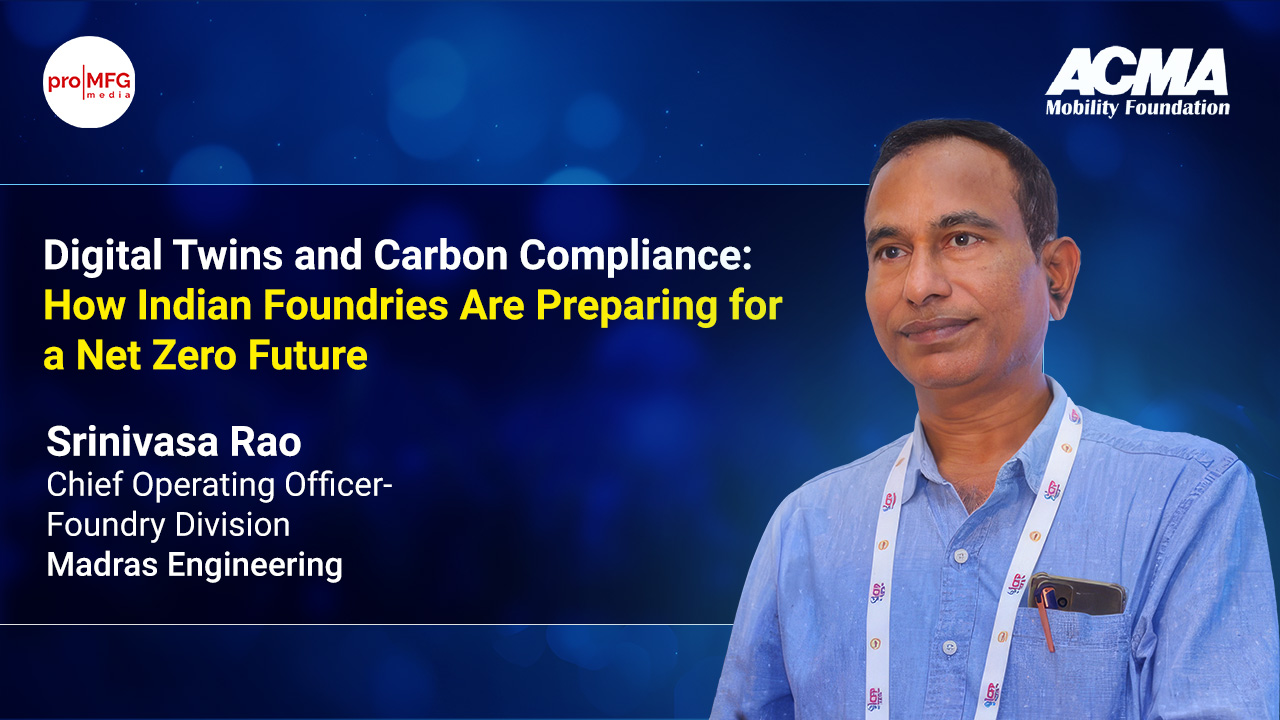Ravind Mithe specializes in strategizing, designing and executing large business transformation initiatives of manufacturing organizations. He has served as Partner and Head of Operations Consulting Practice for KPMG in India. He has also worked as a Partner at PwC and Eicher Consultancy during his long consulting career.

The Importance of Manufacturing
Manufacturing has traditionally played a key role in the economic growth and development of countries. In developing
countries, the importance of manufacturing has diminished over the last 20-25 years, resulting in de-industrialization.
However, industrialization — or increases in the share of manufacturing in Gross Domestic Product (GDP) — is a key
feature of modern economic growth.
Historically, manufacturing has been the backbone of all developed and developing nations. It is where R&D starts, where new technologies are born, where scientists and engineers and others are challenged to develop new and better processes, products and technologies. Manufacturing provides many jobs at all levels and is a vital generator of employment. Among all sectors (services, agriculture, social, manufacturing), the manufacturing sector distributes wealth most equitably among the work-force; hence it is a key factor to pull people above the poverty line. E.g. In most of the fast-developing Asian countries such as Thailand, Indonesia, Malaysia, Taiwan, Philippines, Korea and China, manufacturing has contributed 30 to 50 per cent of GDP and thus helped in eradicating poverty. In India where the manufacturing sector’s contribution to GDP has moved from 16% to 18.32 % in the last 10 years, the government has created the flagship “Make in India program to lift manufacturings contribution to 25% of GDP by 2025.
The manufacturing industry has pioneered historic breakthrough improvements via concepts, tools and methodologies over the last century. Let’s run over the key developments.
- Frederick Taylor’s “SCIENTIFIC MANAGEMENT” of the early 20th century.
- Gilberth’s “Motion Study” together known as “TIME AND MOTION STUDY”
- MASS PRODUCTION SYSTEM of Henry Ford which revolutionized the automobile industry
- STATISTICAL PROCESS CONTROL pioneered by Walter Shewhart and later by Deming and Juran: it significantly improved process quality during World War (WW) I and II
- Dr. EDWARD DEMING’S 14 POINTS: helped Japanese industry to rise from the ruins of WW II
- TOYOTA PRODUCTION SYSTEM (TPS) or “JUST IN TIME PRODUCTION” created by Eiji Toyoda with help from people like Taiichi Ohno and Shigeo Shingo that helped Japan (post WW II) to become the cheapest and most fuel efficient manufacturer of cars
- TOTAL PRODUCTIVE MAINTENANCE to reduce losses in manufacturing by Tokutaro Suzuki that helped improve performance of chemical industry
- SIX-SIGMA at Motorola by Bill Smith to improve defects and improve process capability later made famous by Jack Welch at GE
- THEORY OF CONSTRAINTS (ToC) by Goldratt to improve throughput and reduce operating costs and inventory
- LEAN by James Womack & Daniel Jones who brought TPS from Japan to the western world
As we know, all these concepts which originated in manufacturing are now used across various industrial sectors like IT, Financial Services, Hospitality, Logistics, Government and Armed Forces. This underlines the contribution and importance of manufacturing to industry as a whole.
Manufacturing Excellence (ME) Integrates 5 Basic Elements:
These programs emanated from the specific economic needs of a particular era. In today’s VUCA (Volatility-Uncertainty-Complexity-Ambiguity) world, manufacturing plants across the globe are facing challenges that are significantly greater than ever before. Whether we like it or not, we must perform for quarter-over-quarter financial results, which demands much shorter improvement cycles. Investments in manufacturing are difficult to get approved - making us ‘sweat the assets’ (fully use them) much more than before. The customer has come to expect the following as ‘standard’: next-day delivery, Click & Collect, faster lead times, full order visibility, increased product choice and zero inventory. This significantly impacts the way we need to manufacture. Manufacturing has moved away from demand centers towards geographies with favorable regulations and taxation norms. In many regions, manufacturing is no longer the choice of employment for the best young talent. To address these challenges, manufacturing professionals need to invent their own improvement initiatives to keep doing better, as demanded.
Most of the organized manufacturing set-ups have used one or more concepts over the last two decades to improve their manufacturing performance as standalone initiatives without integration. E.g. in India initiatives like Kaizen, 5S, Quality Circles and Six-Sigma, etc. are excellent in themselves and remain restricted to employees in lower and middle levels. Such programs remain largely cosmetic in nature without creating any competitive advantage. In some multi-plant organizations, each plant is left to decide their individual program with limited or no horizontal deployment of best manufacturing practices. Often there is no integrated approach to such initiatives across the supply chain. Learning from other Units and sharing best practices is hence limited.
Today’s Manufacturing plants are not isolated from the end to end Supply Chain which consists of ‘Plan’, ‘Source’, ‘Make’ and ‘Deliver’. Hence Manufacturing improvement initiatives can’t be confined within the four walls of manufacturing. The objectives of a manufacturing excellence program have to be defined in the context of specific Supply Chain challenges. E.g. 1. An automotive component manufacturer has to build abilities to provide small batch sizes of a variety of parts within a short lead time as demanded by the customer factory, which may not be very good at Supply Chain planning. In such a case, the supplier plant has to focus on efficient layout, quick changeovers with minimum wastages and delayed differentiation. E.g. 2. A pharma plant has to be fully compliant with Good Manufacturing Practices (GMP) as defined by regulators. Thus, the objectives of its’ manufacturing excellence program will require practices like 5S, process capability improvement, SOP management ability to do exhaustive Corrective and Preventive Action (CAPA) and data integrity should be the key objectives of its’ manufacturing excellence program. E.g. 3. An ice-cream manufacturer has to focus on 100% up time and highest capacity utilization during summers and work with a minimum workforce and few shifts in winters. Thus, one has to learn quick capacity ramp-ups and best maintenance capabilities.
The best practice at the top manufacturing companies is to use an integrated program which may be generically called Manufacturing Excellence or Operations Excellence. It can be defined as “A structural approach in a Manufacturing Organization focused on improving throughput, quality, delivery and reducing costs by utilizing various methods of planning, workplace design, asset care and waste elimination through involvement of all the employees with the objective of meeting expectations of all the key stakeholders.” Or simply put “A comprehensive, sustainable, continuous improvement of operations to gain a competitive advantage, lower costs, and increase profit.”
While designing a Manufacturing Excellence program, the manufacturing leaders have to make it holistic to address the unique challenges of the business. A manufacturing plant has five basic elements which govern its performance. These elements are Assets, Processes, Place, Utilities and People. Any lack of plant performance can be traced back to suboptimal management of any/all of these 5 elements.
Many improvement efforts lack this holistic view and hence become limited in impacting the work culture and providing sustained results. It is the responsibility of leaders to learn the basic concepts of Lean, TQM, TPM, Six-Sigma etc. and design a customized program for the manufacturing business with scope to further customize it at the local plant level. The organization needs to select the most appropriate improvement or business philosophy out these and completely imbibe the same across the entire supply chain. ‘Lean’ is emerging as the most holistic business philosophy which incorporates all these methodologies.
NEWSLETTER
TRENDING ON PRO MFG
MORE FROM THE SECTION









